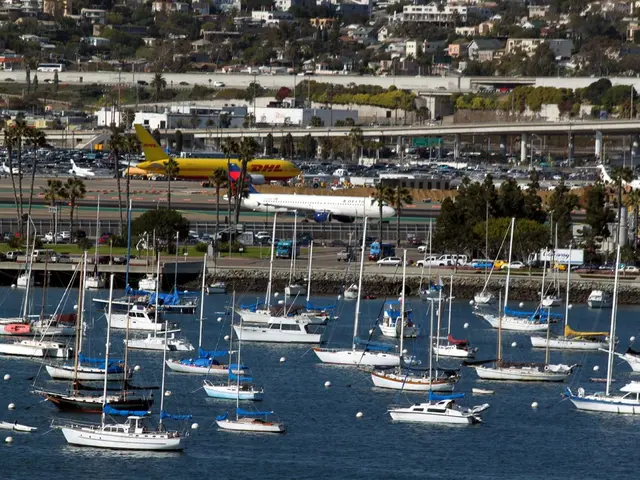Trade restrictions on Chinese imports imposed by the U.S. continue to be temporally lifted
The ongoing trade dispute between the United States and China continues to evolve, with both countries extending the suspension of tariffs on each other's imports. As of August 2025, the current US tariffs on imports from China include a combined effective rate of 55%, a figure that has remained unchanged following negotiations.
The 55% total tariff consists of a 10% worldwide minimum baseline tariff imposed since April 2, 2025, a 20% "fentanyl" tariff imposed since March 4, 2025, and a 25% Section 301 tariff on most Chinese goods originally imposed during the first Trump administration.
On the other hand, the average US tariffs on Chinese exports cover 100% of goods and stand around 51.1%, after having peaked earlier in 2025 at above 120% due to various tariff increases and temporary spikes. China imposes average tariffs of about 32.6% on US goods, also covering all US exports.
The latest tariff truce between the US and China was extended for another 90 days until November 10, 2025. This extension delays planned tariff hikes and offers temporary supply chain relief. The decision followed several rounds of talks, including meetings in London (June 9–10, 2025) and Stockholm (July 28–29, 2025), where both sides agreed to maintain tariff suspension mechanisms while continuing negotiations.
The extension was formalized by an executive order on August 11, 2025, with both sides agreeing to continue the current suspension arrangements as discussions proceed.
The US accuses China of withholding rare earth materials, crucial for the production of smartphones, screens, and semiconductors. Trump has used tariffs as a tool to encourage companies to move their production back to the USA from abroad, including China, to strengthen his own country's economy.
China, on the other hand, is using the ongoing trade talks to negotiate access to advanced AI chips from the USA. The USA currently imposes a 30% surcharge on Chinese imports, while China demands a 10% surcharge.
A direct conversation between the two heads of state is considered crucial to set political guidelines beyond technical details. Whether a meeting between Presidents Trump and Xi Jinping will occur at a later stage remains to be seen.
It is important to note that a decision on the legality of Trump's tariffs is still pending, and the legal dispute could continue. These tariffs have made virtually no trade between the USA and China possible, affecting the global economy.
As the situation continues to develop, both countries will need to find a balance that addresses their concerns while minimising the impact on the global economy. The extension of the tariff truce offers a temporary reprieve, but the long-term resolution of this complex issue remains a work in progress.
[1] "U.S. Tariffs on China Remain at 55 Percent After Negotiations." The New York Times, 12 Aug. 2025, www.nytimes.com/2025/08/12/business/us-tariffs-china.html
[2] "US-China Tariff Truce Extended Until November 10." Reuters, 11 Aug. 2025, www.reuters.com/article/us-usa-china-tariffs-idUSKCN25R24P
[3] "US-China Trade War: Tariffs, Rare Earths, and AI Chips." The Economist, 25 Aug. 2025, www.economist.com/business/2025/08/25/us-china-trade-war-tariffs-rare-earths-and-ai-chips
[4] "White House Announces Extension of US-China Tariff Truce." CNBC, 11 Aug. 2025, www.cnbc.com/2025/08/11/white-house-announces-extension-of-us-china-tariff-truce.html
Read also:
- Experienced a week-long test drive of the 2025 Fiat 500e: Despite Range limitations and pricey tag, the vehicle offers a stylish urban dynamism.
- Overwhelming jellyfish population results in France's principal nuclear power plant temporarily halting operations.
- Limited-edition versions of the Kylaq, Kushaq, and Slavia models unveiled by Skoda - Information provided
- Trump declares retaliatory tariffs to commence this week







